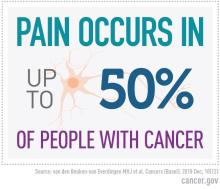
As we embark on year 4 of ULACNet, this issue highlights successes & opportunities, considers how we respond to the community voice in study recruitment, discusses community participation in ULACNet-201 trial recruitment… Learn more
POSTED: 9/23/2022
SOURCE: DCP News

Recruitment has begun for a clinical study that investigators hope will move “liquid biopsy” technology closer to its still-distant goal: a single blood test for the early detection of cancer. Collectively known as multi-cancer early detection (MCED) assays or sometimes multi-cancer detection… Learn more
POSTED: 9/15/2022
SOURCE: Cancer Prevention Science Blog

Research Highlights are a new type of blog for Cancer Prevention Science, where recent publications are highlighted rather than a traditional news story.
This month’s blog post highlights how a cruciferous vegetable extract reduces toxins from tobacco and reports the effects of Polyphenon E in… Learn more
POSTED: 8/24/2022
SOURCE: Cancer Prevention Science Blog
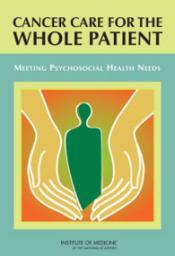
In 2012, Patricia Ganz, M.D., saw a 39-year-old cancer survivor for a consultation who had a long-term history of anxiety during medical visits.
Patricia Ganz, M.D.
The woman had been diagnosed with Hodgkin lymphoma when she was 23 years old. Though her… Learn more
POSTED: 8/10/2022
SOURCE: Cancer Prevention Science Blog
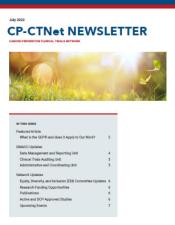
Welcome to the CP-CTNet Newsletter where we share programmatic and research updates for the Cancer Prevention Clinical Trials Network (CP-CTNet).
POSTED: 7/22/2022
SOURCE: CP-CTNet DMACC Website
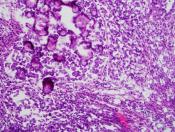
Unlike many other cancers, the incidence and death rates for uterine cancer are rising.
An example of a nonendometrioid cancer.
Credit: Marina J. Merino, M.D. National Cancer Institute at NIH
Rates of new uterine cancer cases have risen 0.6% per year… Learn more
POSTED: 6/28/2022
SOURCE: Cancer Prevention Science Blog
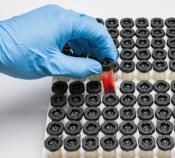
National Cancer Institute prevention chief discusses steps toward largest U.S. cancer screening trial ever
POSTED: 6/22/2022
SOURCE: Science Magazine
Key Messages
Although aspirin use has been studied for decades, there are still many gaps in our understanding its role in cancer prevention.
Risk-benefit analyses should be conducted to ensure that the right patients are receiving aspirin or other nonsteroidal anti-inflammatory drugs (NSAIDs)… Learn more
POSTED: 6/15/2022
SOURCE: DCP News
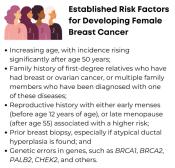
In the era of personalized medicine, prevention and screening for breast cancer are evolving toward new approaches that assess each woman’s risk and lifestyle factors.
All women do not carry the same risk for the same type of breast cancer. The old one-size-fits-all screening method can miss the… Learn more
POSTED: 5/6/2022
SOURCE: Cancer Prevention Science Blog
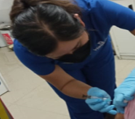
In this issue, we feature: ULACNet Initiative to Enhance Community Dialogue, Community outreach strategies for recruitment in ULACNet-101 in Puerto Rico, Accrual initiated in Peru for ULACNet-301, an Investigator Spotlight… Learn more
POSTED: 4/28/2022
SOURCE: DCP News
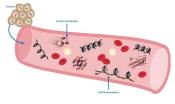
One of the exciting areas of cancer prevention research is the development of noninvasive tests that may have the potential to easily and accurately determine whether and where in the body a person has early-stage cancer. And not just for a single cancer but for many cancers. Over… Learn more
POSTED: 4/21/2022
SOURCE: NCI Cancer Currents Blog

Overall, cancer death rates in the United States have been declining about 2% per year, current SEER data from 2014 through 2018 show. However, these improvements have not been experienced equally by everyone, which is one of the reasons that April is Minority Cancer Awareness Month, when we call… Learn more
POSTED: 4/18/2022
SOURCE: Cancer Prevention Science Blog
Joyce Ares had just turned 74 and was feeling fine when she agreed to give a blood sample for research. So she was surprised when the screening test came back positive for signs of cancer. After a repeat blood test, a PET scan and a needle biopsy, she was diagnosed with Hodgkin lymphoma.
POSTED: 4/11/2022
SOURCE: AP News

April 8-13, 2022
DCP/PREVENT-funded Project Presentations
Session OPO.IM01.01 - Tumor Immunobiology
5631 - Immunomodulatory activity of sulindac plus erlotinib for colon cancer prevention in familial adenomatous polyposis
Presenter/Authors
Chakrapani Tripathi, Roderick H. Dashwood. Texas A&M… Learn more
POSTED: 4/1/2022
SOURCE: DCP News
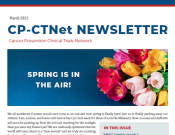
Welcome to the CP-CTNet Newsletter where we share programmatic and research updates for the Cancer Prevention Clinical Trials Network (CP-CTNet).
POSTED: 3/31/2022
SOURCE: CP-CTNet DMACC Website

Philadelphia, March 25, 2022 — The Tomosynthesis Mammographic Imaging Screening Trial (TMIST), is more than halfway to its recruiting goal of 128,905 participants with more than 20% of participants in the United States being Black. Recruitment of women from diverse backgrounds is vital to… Learn more
POSTED: 3/25/2022
SOURCE: ECOG-ACRIN Press Release

This issue of Nutrition Frontiers showcases gut permeability with calcium and/or vitamin D3, microRNAs role in suppressing colitis and inflammation-associated colon cancer, and how dietary spinach reshapes gut microbiome.… Learn more
POSTED: 3/18/2022
SOURCE: DCP News
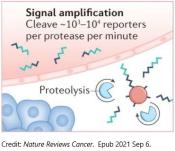
Tumor cells release telltale molecules into blood, urine, and other bodily fluids. But it can be difficult to detect tumor-derived DNA, RNA, and proteins in the earliest stages of disease, when cancers can be easier to treat and cure. Earlier stages shed fewer cancer cells—and fewer tumor markers… Learn more
POSTED: 2/9/2022
SOURCE: Cancer Prevention Science Blog

While new cases of most cancer types have dropped over the past decade, cases of the most common type of liver cancer, hepatocellular carcinoma (HCC), are on the rise. Until recently, the main cause of HCC was hepatitis C virus infection. Although hepatitis C infection still causes many… Learn more
POSTED: 2/4/2022
SOURCE: NCI Cancer Currents Blog

This issue recognizes January as Cervical Cancer Awareness Month by presenting four articles entitled, "ULACNet Annual Meeting: A Global Network Together in One (Zoom) Room", "Perseverance Through the COVID… Learn more
POSTED: 1/28/2022
SOURCE: DCP News

Many people being treated for advanced cancer experience serious financial problems related to the cost of their care, even if they have health insurance, according to a new study.
POSTED: 1/26/2022
SOURCE: NCI Cancer Currents Blog
Key Messages
There are many screening questions that can be addressed through clinical trials.
One size doesn’t fit all: There is a trend for increasingly personalized screening, where cancer screening recommendations are guided by detailed risk assessments, including models.
Promising… Learn more
POSTED: 1/25/2022
SOURCE: DCP News
A meeting of statistical leads from the seven NCI Community Oncology Research Program (NCORP) Research Bases with statisticians from the Division of Cancer Prevention (DCP) Biometry Research Group took place on July 16, 2021.
Meeting Goals and Content
The meeting had a few key objectives:
To… Learn more
POSTED: 1/20/2022
SOURCE: DCP News
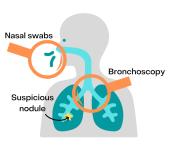
Lung cancer, the leading cause of cancer deaths worldwide killing 1.8 million people each year, is often diagnosed at an advanced stage when the chances for a cure are limited.
In the United States, almost 60% of people diagnosed with localized lung and bronchus cancer are likely to survive for 5… Learn more
POSTED: 1/14/2022
SOURCE: Cancer Prevention Science Blog
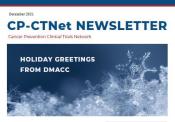
Welcome to the CP-CTNet Newsletter where we share programmatic and research updates for the Cancer Prevention Clinical Trials Network (CP-CTNet).
POSTED: 12/22/2021
SOURCE: CP-CTNet DMACC Website
